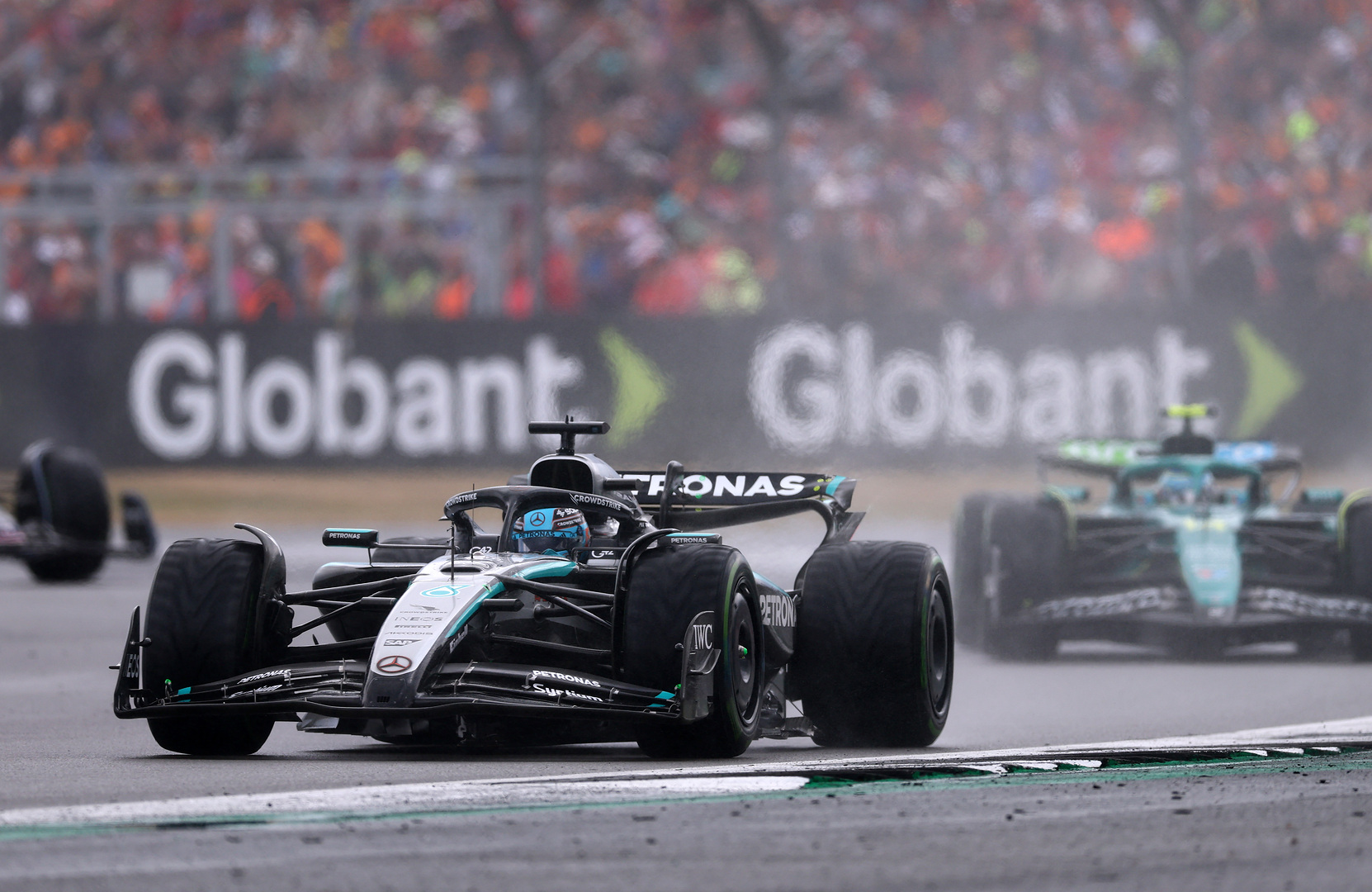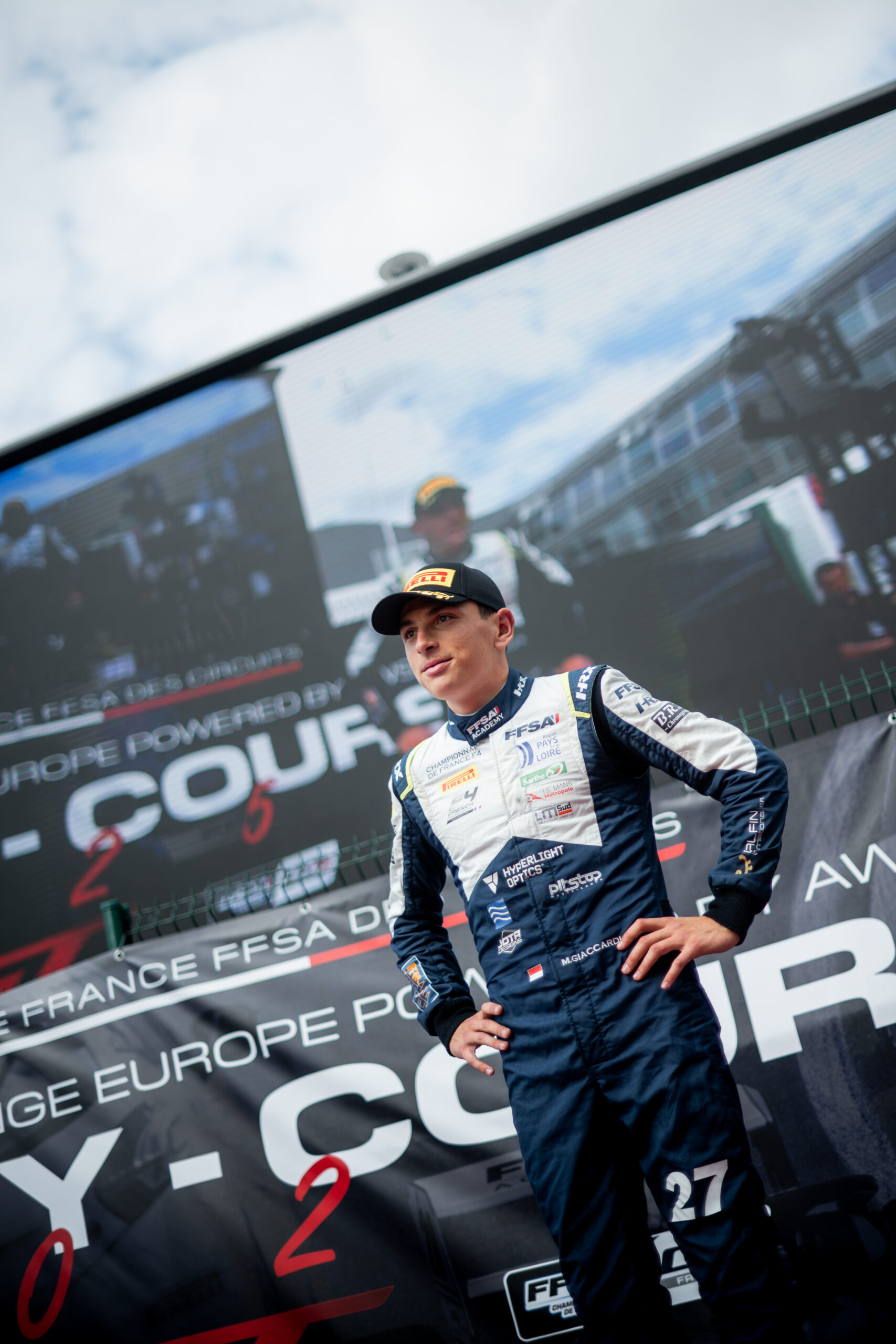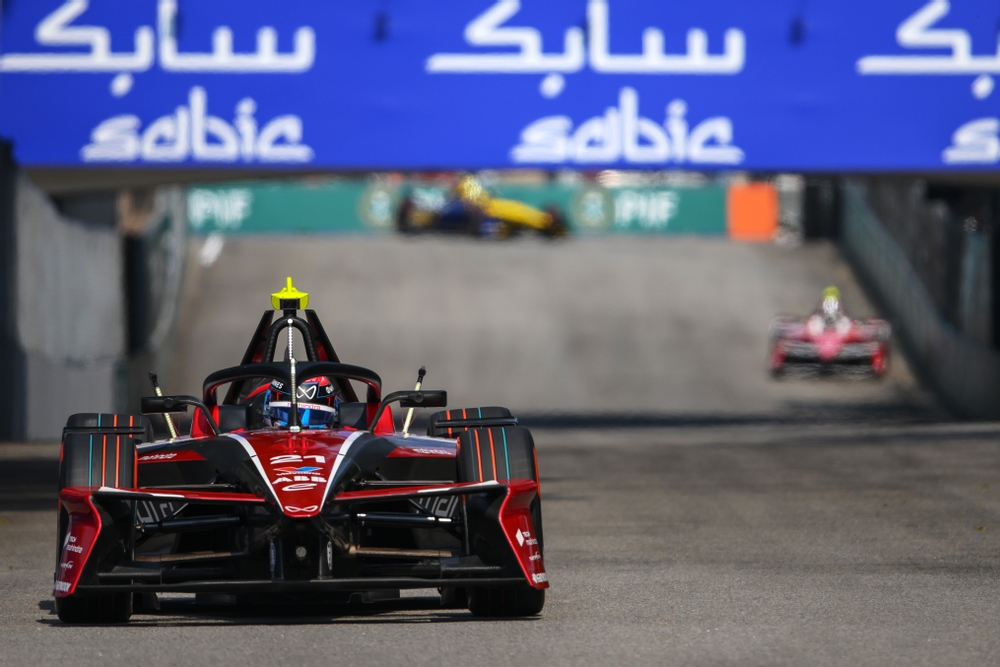Mercedes suffered a torrid afternoon at the F1 British GP, with a series of missteps turning what could have been a strong points finish into a painful lesson in race management. Team principal Toto Wolff did not mince words when reflecting on a day that saw both drivers struggle with ill-timed tyre changes and poor communication.
Early promise turns to disaster
The race began with promise for Mercedes, as George Russell started fourth on the grid, whilst Kimi Antonelli was P7. However, the changeable conditions that characterised the weekend would soon expose fundamental flaws in the team’s decision-making process.
As rain began to fall in the early stages, Mercedes found themselves caught in a strategic nightmare. Russell and several other drivers had started from the pit lane after opting for slick tyres following the formation lap, but the team’s subsequent tyre calls would prove catastrophic.
The first fatal decision
The opening salvo in Mercedes’ strategic collapse came when Russell boxed for slick tyres at the end of the formation lap. Kimi Antonelli came in at the end of lap 2 for the hards as well.
They were decisions that Wolff later described as “terribly wrong” and one that would trigger a domino effect of poor choices.
“Well, the driver is team. We’re all in this together. But the first call or the first decision from within the car and the people was terribly wrong,” Wolff explained in his F1 British GP post-race print media session. “And that kind of made us spiral from bad to worse, because that triggered the stop for Kimi.
“When you see where Kimi [Antonelli] was running, we should have simply kept him out with a split strategy and probably we would have been where Hülkenberg was, because he was ahead of him,” Wolff reflected, acknowledging that the young driver could have been in contention for the historic podium that ultimately went to Nico Hülkenberg.
A cascade of errors
The problems compounded throughout the race. On lap 39, as the track began to dry, Russell was brought in for hard slick tyres — a gamble that backfired spectacularly when the Briton suffered a dramatic spin in the Maggots and Becketts section. The hard compound tyres, intended to capitalise on the drying conditions, instead left Russell vulnerable and struggling for pace as everyone else went for softs or mediums.
“That’s not to diminish Nico’s [Hülkenberg] driving, which from far away looked very good. And then we had the wrong tyre on the car, because we believed the medium wouldn’t last with us, because Friday was today. Another wrong decision,” Wolff admitted.
Communication breakdown
Perhaps most damaging was Wolff’s assessment of the team’s internal communication during the F1 British GP. The Austrian was particularly critical of the dialogue between the pit wall and drivers, suggesting that the decision-making process had fundamentally broken down.
“And then obviously the second stop was probably even more wrong than the first one. And that was basically the guillotine that fell,” Wolff said, before adding: “I think the driver, pit wall communication was just very bad today.”
When pressed on whether the errors were part of a chain reaction, Wolff was keen to emphasise that the initial decision was the root cause of their troubles.
“I wouldn’t say it’s a snowball effect. It was more like one action, driver, pit wall, action, triggered a situation that was already bad. And then it was simply, I think we can keep it very simple, the second decision when Kimi was wrong, the third decision was wrong.”
Antonelli’s promising but brief drive
The race marked a significant milestone for Mercedes, with Kimi Antonelli making his anticipated debut in Silverstone as an F1 driver, after winning the F2 Sprint Race last year. The young Italian initially showed promise, narrowly avoiding running wide on his out lap after an early pit stop for hard tyres under VSC conditions. However, his race was ultimately cut short when he was involved in a collision with Isack Hadjar at Copse corner on lap 18.
Despite the crash being deemed a racing incident by stewards, the damage to Antonelli’s car was too substantial to continue. His race engineer called him into the pits to retire on lap 23, ending what had been a learning experience for the future Mercedes driver.
Russell’s struggles continue
Russell’s afternoon epitomised Mercedes’ woes. After starting from the pit lane, the Briton found himself battling both the conditions and his team’s strategy calls. His late-race spin whilst on hard tyres encapsulated perfectly the team’s misjudgement of the conditions, with the compound proving entirely unsuitable for the wet-to-dry transition.
By the closing stages of the F1 British GP, Russell was fighting with Oliver Bearman for tenth position, his hard tyres proving to be what Wolff described as “the wrong call from the Mercedes strategy team”. It was a far cry from the podium contention that had seemed possible earlier in the weekend.
Learning from failure
In the aftermath of the race, Wolff was refreshingly candid about the team’s failures. When asked about the decision-making process, he revealed that the team had conducted what he termed “a robust chat” immediately after the race.
“I think all of us together had a robust chat up there. And everybody acknowledges that the first decision was actually the catastrophic one,” Wolff explained, suggesting that the team was already beginning the process of understanding where they had gone wrong.
“I think we can keep it very simple, the second decision when Kimi was wrong, the third decision was wrong. And I think the driver, pit wall communication was just very bad today.”
Moving on to Spa
As the championship battle intensifies, Mercedes’ F1 British GP weekend serves as a stark reminder of how quickly competitive advantage can be squandered through poor execution. With both McLaren drivers on the podium and Max Verstappen recovering from his own early struggles to finish in the points, Mercedes’ inability to capitalise on the choppy conditions will sting particularly hard.
The Silver Arrows now face the challenge of rebuilding their processes ahead of the next race, with Wolff’s frank assessment providing a roadmap for improvement.





